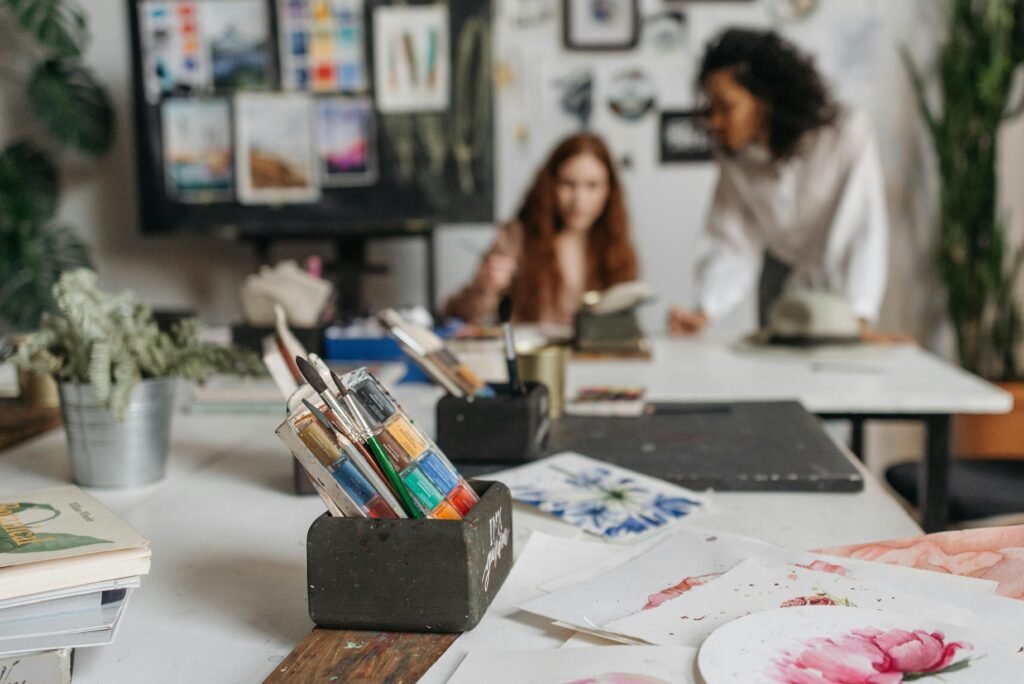
Introduction to Mindfulness and Creativity
Creativity fuels the artistic journey, but sometimes, the well of inspiration can run dry, leaving artists feeling stuck and frustrated.
This is where mindfulness can play a pivotal role.
By integrating mindfulness techniques into their daily lives, artists can break free from creative blocks and tap into a deeper well of inspiration.
Mindfulness enhances artistic creativity by fostering a state of present-moment awareness.
This heightened sense of awareness allows artists to notice details they might otherwise overlook, opening up new avenues for creative exploration.
When the mind is clear and focused, it becomes easier to access innovative ideas and unique perspectives.
Incorporating mindfulness into daily routines helps artists cultivate a calmer, more centered mindset.
This mental state is essential for creative work, as it allows for greater concentration and the ability to see projects through to completion.
Moreover, mindfulness practices can reduce the anxiety and self doubt that often accompany the creative process, providing a more supportive inner environment for artistic endeavors.
One of the key benefits of mindfulness is its ability to help artists stay grounded in the present moment.
Rather than getting caught up in worries about the future or regrets about the past, mindfulness encourages a focus on the here and now.
This present moment focus can lead to more authentic and spontaneous artistic expression, as artists are less likely to be hindered by external pressures or internal criticism.
In addition to enhancing individual creativity, mindfulness can also foster a greater sense of connection with the world around us.
This connection can be a rich source of inspiration, as artists draw from their surroundings and experiences to create meaningful work.
Whether it’s the beauty of a natural landscape, the complexity of human emotions, or the intricacies of daily life, mindfulness helps artists see the world with fresh eyes and an open heart.
By embracing mindfulness, artists can unlock new levels of creativity and overcome the barriers that stand in the way of their artistic potential.
Through regular practice, they can cultivate a more vibrant, inspired, and fulfilling artistic journey.
Mindful Breathing Exercises
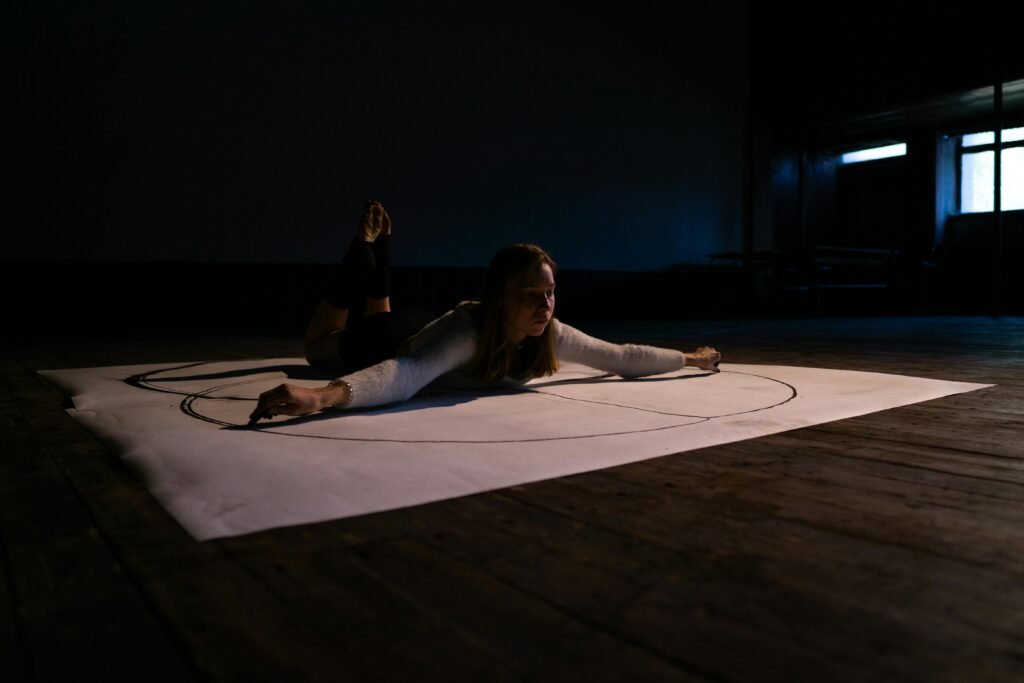
Mindful breathing is an essential technique for artists looking to boost their creativity.
It’s a simple yet powerful practice that helps clear mental clutter, allowing new ideas to surface.
One effective technique is box breathing.
To practice box breathing, inhale deeply for four counts, hold your breath for four counts, exhale for four counts, and then pause for another four counts before repeating.
This rhythmic breathing pattern helps to calm the mind and body, reducing stress and making room for creative thoughts.
Another powerful breathing exercise is the 4-7-8 technique.
Inhale deeply through your nose for four counts, hold your breath for seven counts, and then exhale completely through your mouth for eight counts.
This method not only relaxes the mind but also promotes a state of alert relaxation, perfect for diving into creative work.
By focusing on your breath, you can center your thoughts and push aside distractions, making it easier to access your creative flow.
To get started with mindful breathing, find a quiet place where you won’t be disturbed.
Sit comfortably with your back straight and close your eyes.
Begin by taking a few deep breaths, inhaling through your nose and exhaling through your mouth.
As you settle into a rhythm, start counting your breaths.
You might find it helpful to place one hand on your chest and the other on your abdomen, feeling the rise and fall of your breath.
Mindful breathing can be integrated into your daily routine with just a few minutes of practice each day.
Whether you’re preparing to start a new project or feeling stuck in the middle of one, taking a moment to focus on your breath can provide a mental reset.
Over time, this practice will become second nature, helping you stay grounded and open to new artistic possibilities.
The key is consistency and allowing yourself the time to breathe and be present, paving the way for fresh and inspired creative expressions.
Visualization Techniques
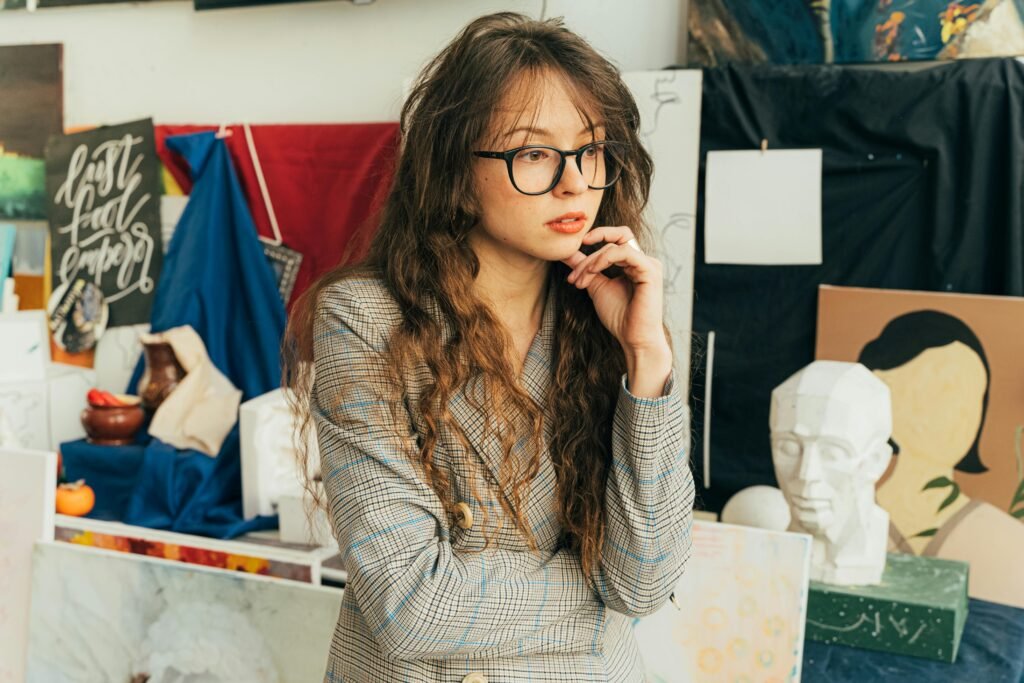
Visualization is an incredible tool for artists seeking to ignite new creative ideas and overcome artistic blocks.
Imagine for a moment that you are a director in your own mind, setting the stage for your next masterpiece.
By creating vivid mental images, you open the door to endless possibilities that can invigorate your artistic process.
Start by finding a quiet place where you won’t be disturbed.
Close your eyes and take a few deep breaths to center yourself.
Begin to imagine a scene in rich detail. It could be a fantastical landscape, an intricate pattern, or even an abstract concept.
Focus on the colors, textures, and forms that emerge in your mind’s eye.
Let your imagination run wild and don’t be afraid to explore ideas that may seem unconventional or out of your usual style.
One effective visualization exercise involves imagining a completed artwork.
Picture it hanging on a wall or displayed in a gallery.
What does it look like? How do the colors interact? What emotions does it evoke?
This practice can offer a clear vision of your goals and provide a roadmap for your creative journey.
Another technique is to visualize yourself in the act of creation.
Picture yourself holding a brush, sculpting clay, or sketching with charcoal.
Imagine the sensations; the feel of the materials, the movements of your hands, and the focused energy you bring to your work.
This kind of mental rehearsal can make the actual process of creating feel more familiar and less intimidating, boosting your confidence and encouraging you to dive in.
You can also use visualization to solve creative problems.
If you’re stuck on a particular aspect of your work, close your eyes and mentally experiment with different solutions.
Imagine changing colors, altering compositions, or adding new elements.
This mental experimentation can often lead to breakthroughs that might not have been apparent through traditional brainstorming methods.
Visualization can be integrated into your daily routine as a quick mental exercise or a more extended meditation.
The more you practice, the more vivid and impactful your mental images will become, serving as a constant wellspring of inspiration.
Embrace this powerful technique to push your creative boundaries and discover new artistic horizons.
Meditation Practices
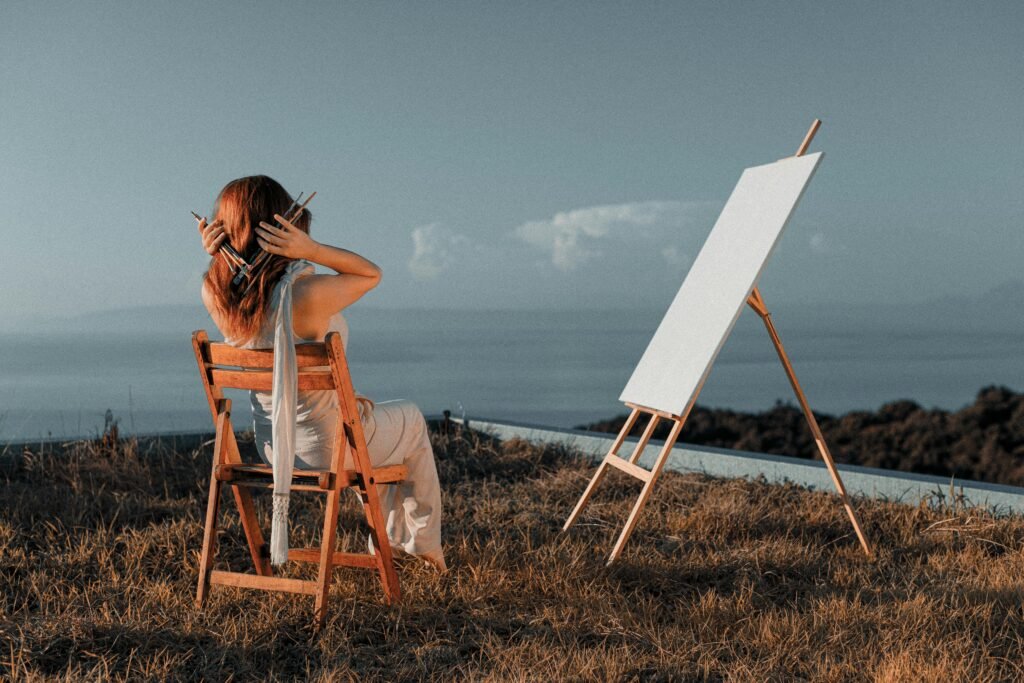
Meditation is a cornerstone technique for reducing stress and enhancing focus, which are vital for any artist aiming to tap into their creativity.
Research highlights that mindfulness training significantly improves aspects like self reported mindfulness, depressive symptoms, rumination, and performance in working memory and sustained attention.
Different meditation styles offer varied benefits.
Mindfulness meditation is particularly effective for maintaining attention and awareness, fostering a mental space conducive to creativity.
MRI images from an 8-week mindfulness program revealed increases in gray matter in brain areas involved in learning, memory, and emotion regulation.
To practice mindfulness meditation, find a quiet space where you won’t be disturbed. Sit comfortably and close your eyes.
Focus on your breath, noticing the sensation of each inhale and exhale.
If your mind starts to wander, gently bring your focus back to your breath.
This simple act of sustained attention helps clear mental clutter, paving the way for new creative ideas.
Transcendental meditation is another effective style, involving the silent repetition of a mantra.
This technique helps settle the mind into a state of restful alertness, reducing stress and enhancing creative thought.
Similarly, loving kindness meditation focuses on cultivating feelings of compassion and love towards oneself and others, creating a positive mental state that can inspire artistic expression.
Integrate these practices into your daily routine.
Even just a few minutes each day can make a significant difference.
Consistency is key, and over time, you’ll likely notice increased mental clarity, reduced stress, and a more profound connection to your creative flow.
Embrace meditation as a powerful tool to fuel your artistic journey, enabling you to push your creative boundaries further than ever before.
Mindful Observation
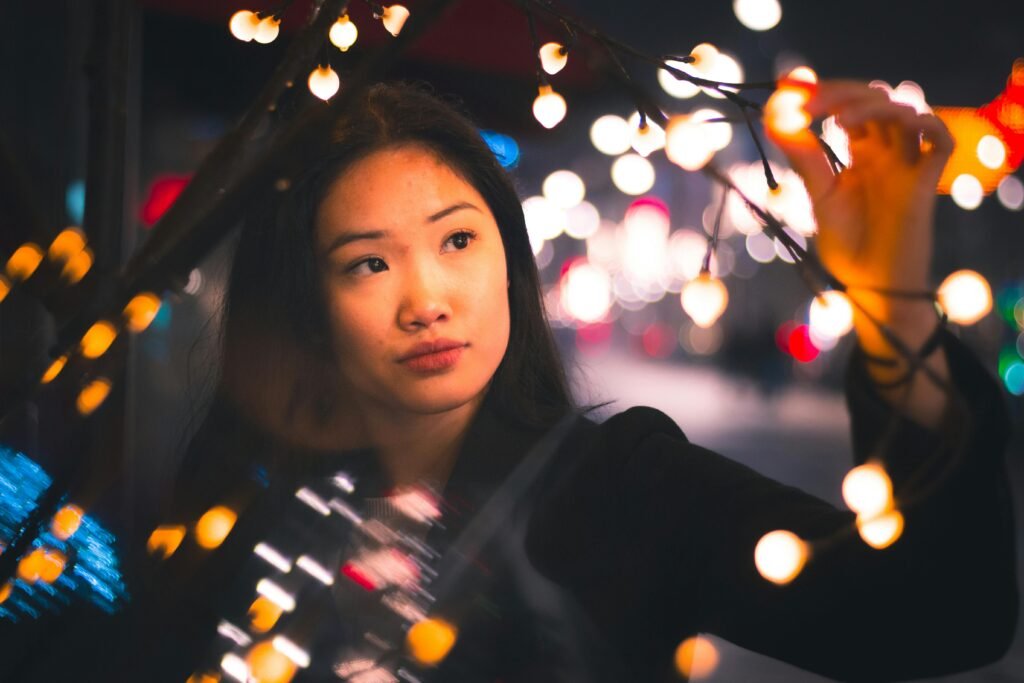
Observation skills are vital for artists aiming to draw inspiration from their surroundings.
Engaging in mindful observation exercises can refine these skills and open up new avenues of creativity.
One powerful exercise involves focusing intently on a single object or scene without any distractions.
Choose something simple; a leaf, a piece of fabric, or a street corner.
Observe it closely, taking note of the details you might ordinarily overlook: the subtle variations in color, the interplay of light and shadow, the textures, and even the sounds or movements around it.
By immersing yourself in this practice, you train your mind to notice the finer details that often go unnoticed.
This heightened awareness can lead to significant creative breakthroughs, allowing you to translate these observations into your artwork with greater precision and depth.
Take, for instance, the practice of sketching what you see.
Rather than drawing from memory or imagination, sit in front of your chosen subject and sketch it as it appears in real time.
This exercise not only improves your technical skills but also enhances your ability to see the world with a more discerning eye.
Another method is to practice mindful observation during your daily activities.
Whether you’re riding the bus, walking to your favorite coffee shop, or sitting in a park, take a few moments to consciously observe your surroundings.
Notice the expressions on people’s faces, the architecture of buildings, the colors of the sky at different times of the day.
This practice can provide a constant stream of inspiration, helping you to see beauty and interest in the mundane.
Mindful observation can also be applied to your own work.
Spend time observing your art from different angles and perspectives.
Look for areas where you can add more detail or explore new techniques.
This reflective practice can reveal hidden opportunities for improvement and innovation, fueling your creative process and helping you grow as an artist.
Journaling for Creative Insights
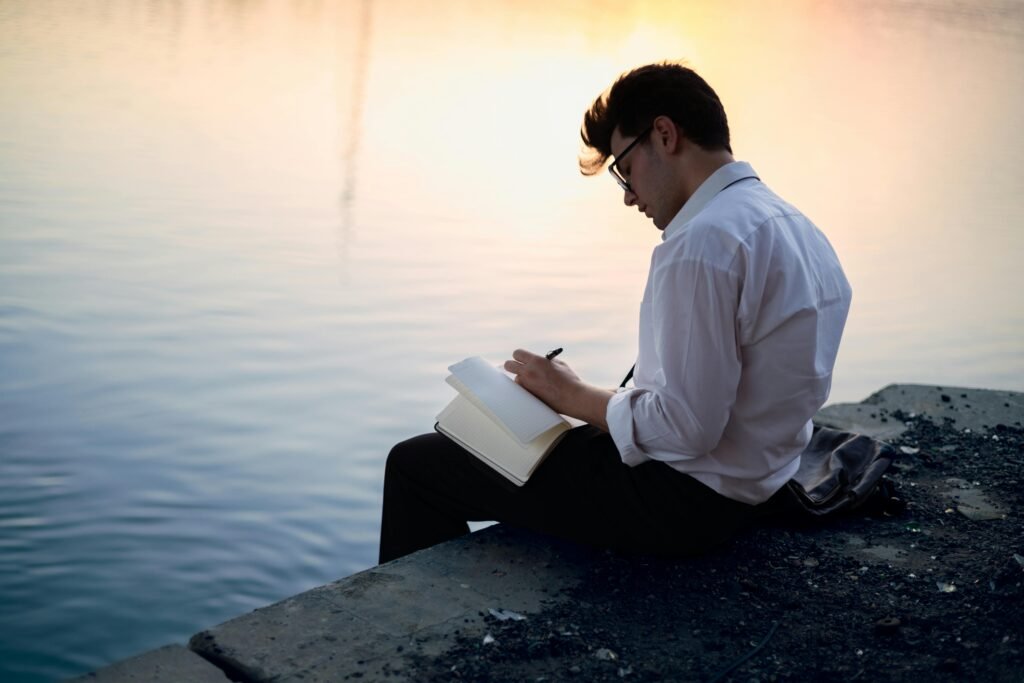
Journaling is a powerful tool for artists to capture fleeting ideas and deepen their creative practice.
Setting aside dedicated time each day to write in a journal can provide a structured space to reflect on your artistic journey, track your progress, and spark new ideas.
This practice is particularly effective for identifying patterns, uncovering hidden themes, and gaining a deeper understanding of your work.
Start by finding a quiet place where you can write without interruptions.
Use this time to jot down anything that comes to mind; thoughts, ideas, observations, or even frustrations.
You don’t need to worry about grammar or style; the goal is to let your thoughts flow freely onto the page.
This unfiltered self-expression can lead to unexpected insights and creative breakthroughs.
Use prompts to kickstart your journaling sessions.
Questions like “What inspired me today?” or “What challenges am I encountering in my current project?” can provide direction and focus.
By regularly exploring these prompts, you’ll begin to see connections between different aspects of your life and art, revealing new pathways for creative exploration.
Don’t limit yourself to just words.
Incorporate sketches, doodles, or even snippets of poetry into your journal.
These visual elements can complement your written reflections and offer a richer, more nuanced view of your creative process.
For instance, if you had an interesting dream, sketch it out or describe it vividly.
Such entries can serve as valuable reference points for future projects.
Review your journal regularly to track your progress and revisit past ideas.
You might find that a concept you jotted down weeks ago now fits perfectly into your current project.
This ongoing dialogue with yourself can help you stay connected to your creative flow and keep your artistic vision clear.
Journaling also serves as a safe space to experiment with new ideas without the pressure of immediate execution.
This freedom can foster a more playful and adventurous approach to your art, allowing you to take risks and explore new directions.
Embrace journaling as a dynamic part of your creative toolkit, and watch how it transforms your artistic practice.
Engaging with Nature
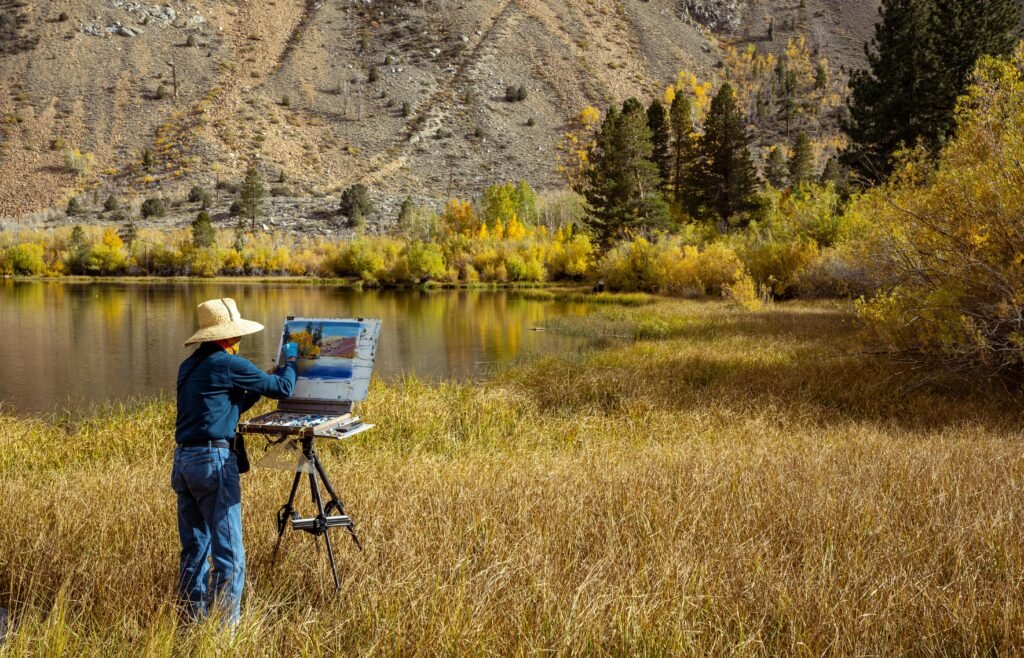
Spending time in nature is a powerful way to recharge your creative energy and gain new perspectives.
Whether you’re hiking through a forest, strolling along a beach, or simply sitting under a tree in a park, these moments of connection with the natural world can spark profound artistic insights.
Start by immersing yourself fully in your surroundings.
Pay attention to the rustling leaves, the birdsong, the feel of the breeze against your skin.
Let the sensory experiences wash over you, clearing your mind of daily stresses and opening up space for fresh ideas to emerge.
Nature’s patterns and colors can serve as endless sources of inspiration, from the intricate designs of a spider’s web to the vibrant hues of a sunset.
Engaging in nature-inspired activities can further enhance your creative flow.
Bring a sketchbook or a camera along on your outdoor adventures.
Capture the details that catch your eye; the way light filters through the trees, the texture of rocks, or the movement of water.
These visual records can be revisited later in your studio, providing a wealth of material to draw upon for your art.
For a deeper experience, try incorporating elements of nature into your work.
Use natural materials like leaves, twigs, or stones in your mixed media projects.
Experiment with natural dyes or pigments to create unique color palettes.
This hands on interaction with nature can lead to innovative techniques and unexpected artistic outcomes.
Remember, nature is a boundless source of inspiration that offers more than just visual stimulation.
The tranquility and beauty you find outdoors can cultivate a sense of peace and mindfulness, making it easier to tap into your inner creative wellspring.
Make a habit of spending regular time in nature, and watch how it invigorates your artistic practice.
Conclusion: Embracing Mindfulness for Artistic Growth
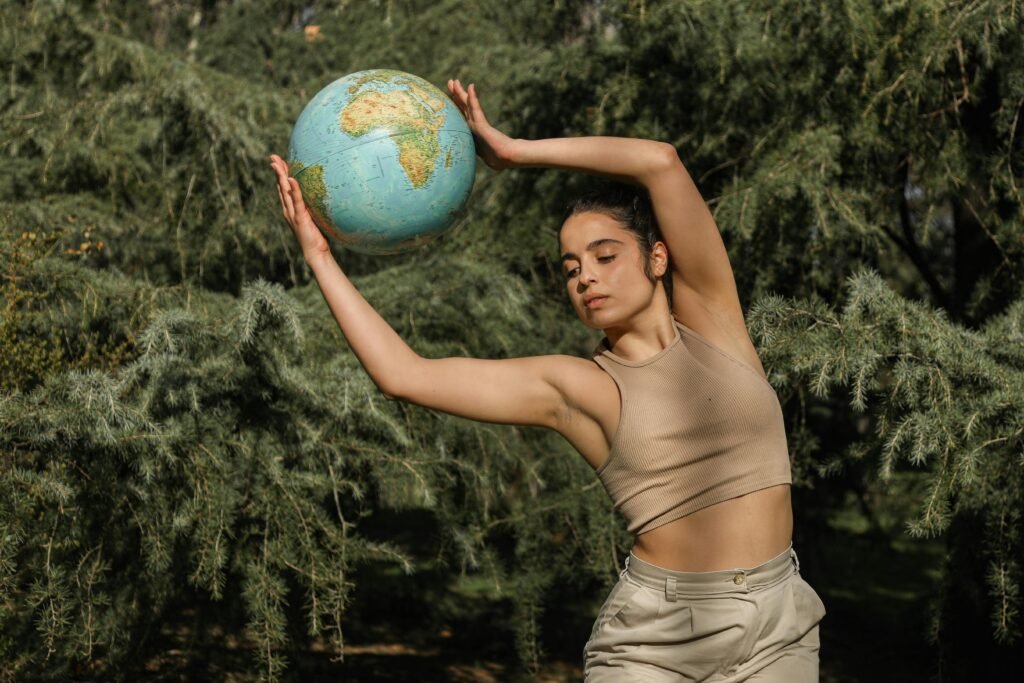
Embracing mindfulness techniques can be a transformative journey for artists seeking to enhance their creativity and push through blocks.
Mindful practices like breathing exercises, visualization, meditation, and observation allow artists to access deeper levels of inspiration and refine their craft.
Consistently incorporating these techniques into your routine fosters a mental environment conducive to creativity.
Each mindful breath, each moment of focused attention, and each reflective journaling session clears the mental clutter, paving the way for new ideas and perspectives.
The benefits extend beyond individual creativity.
Engaging with nature and observing the world around you can provide a continual source of inspiration, while journaling offers a structured space to reflect on and develop your artistic vision.
Remember, the key to reaping these benefits is consistency.
Regular practice helps cultivate a mindset that not only enhances your artistic abilities but also enriches your overall well being.
By integrating mindfulness into your daily life, you create a fertile ground for artistic growth and self discovery.
Your art will reflect this enriched inner world, leading to more authentic and impactful creative expressions.
